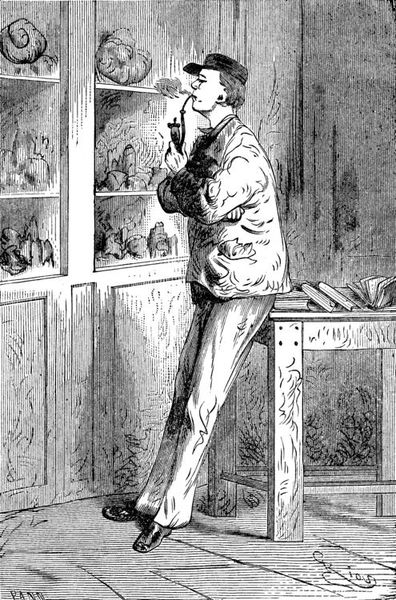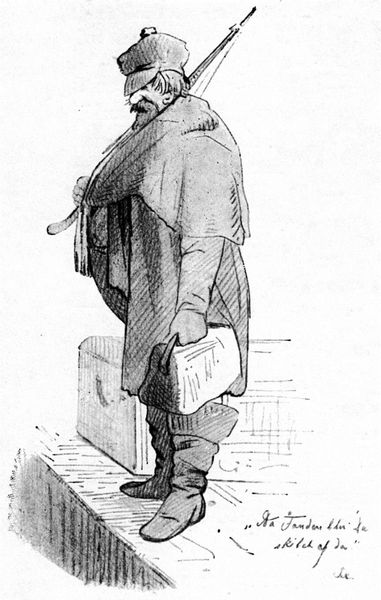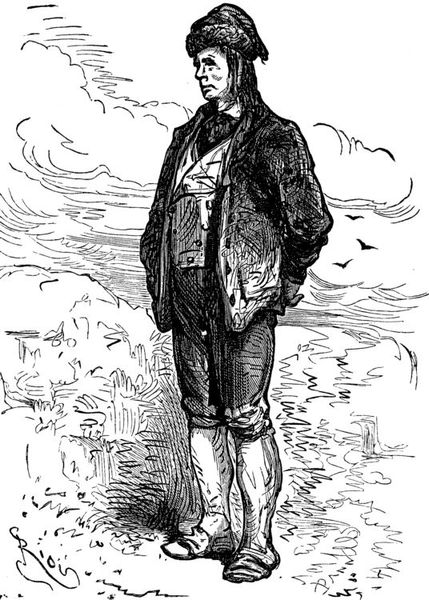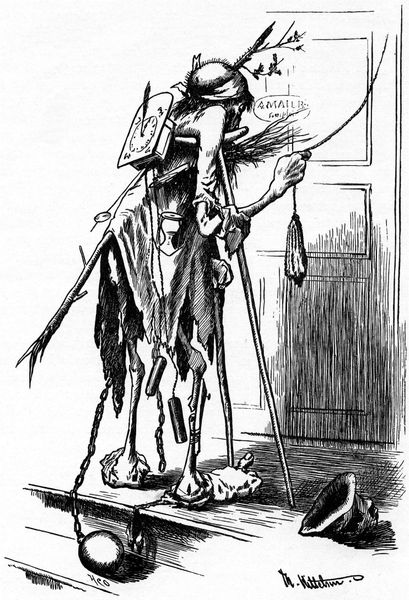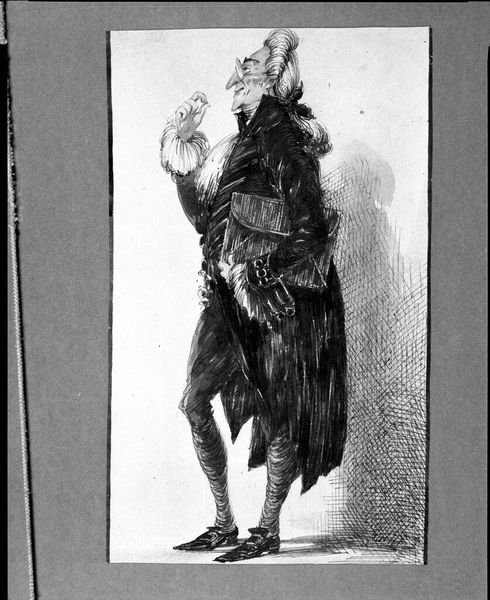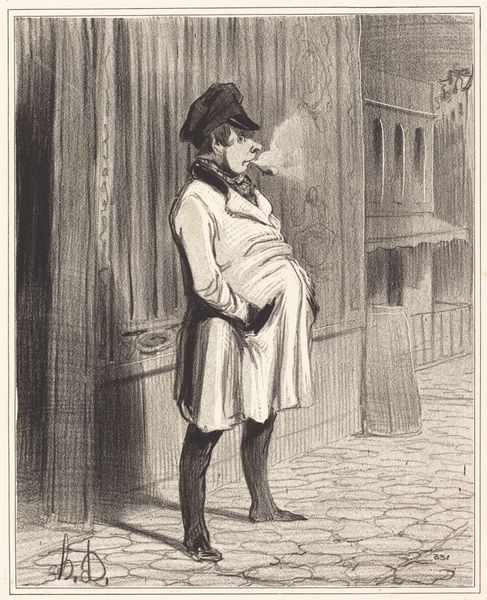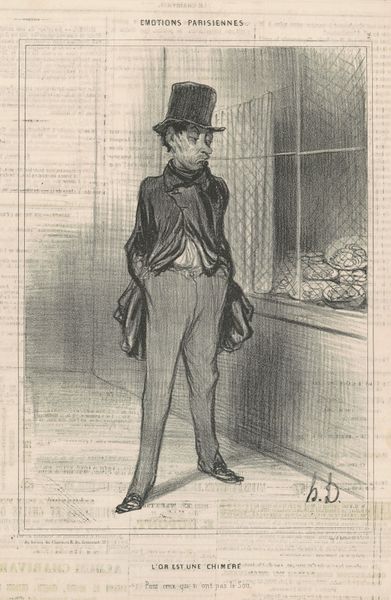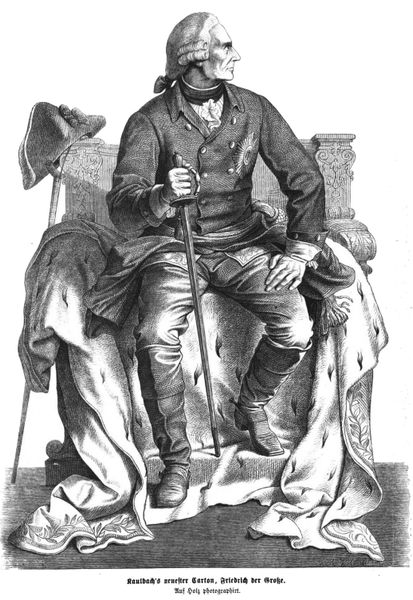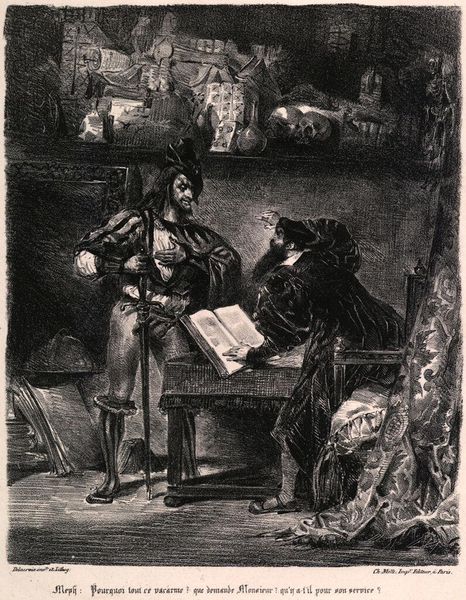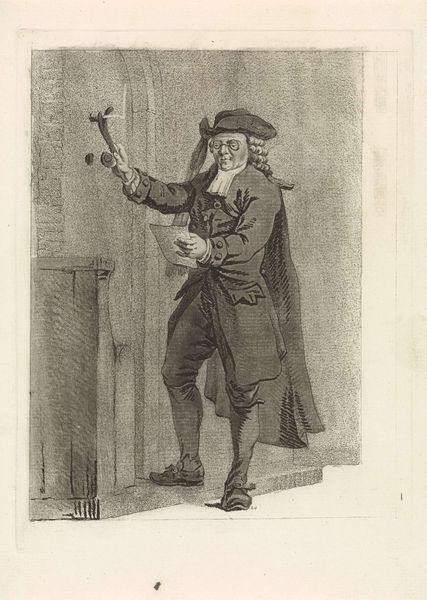
Copyright: Public domain
Editor: Here we have Édouard Riou's illustration from 1864, "Journey to the Center of the Earth," rendered with pen and ink. The lone figure appears deeply engrossed in… something. It's a pretty mysterious drawing, actually. What do you see in it? Curator: Ah, yes. Riou's illustrations for Verne are pregnant with cultural anxieties and fascinations regarding the unknown, visualized through the paraphernalia of scientific exploration. Notice how the scientist obscures his own face with the equipment, literally blinding himself to the exterior world in order to penetrate a hidden, interior one. The human skull recurs throughout visual culture as a symbol. Here, the geological display case further speaks to notions of human identity in the face of time. Does he perhaps see a part of himself in these specimens? Editor: That’s interesting. So, the objects themselves are almost acting like mirrors? I was just thinking he looked like a funny sort of inventor. Curator: Indeed! Think about what "invention" really signifies – discovery. He is unveiling and unveiling: the mysteries held by scientific inquiry and by what images promise. What is he attempting to reveal about himself in the process, given what cultural memory ascribes to looking or blindness? Editor: So, it’s not just about physical exploration, but also this introspective journey? That adds another layer to the narrative. Curator: Precisely. Riou cleverly uses the romantic, gothic trope of a single scholar figure isolated amidst vastness to delve into these complex, layered questions. What do you make of his pose? Editor: He seems unsteady somehow, precariously balanced. Maybe that insecurity mirrors his internal exploration too? Thanks. I hadn’t thought of it that way at all. Curator: And it is this interplay of visual cues that elevates Riou's illustration beyond mere storytelling. A compelling glimpse, I think, into the cultural psyche.
Comments
No comments
Be the first to comment and join the conversation on the ultimate creative platform.
